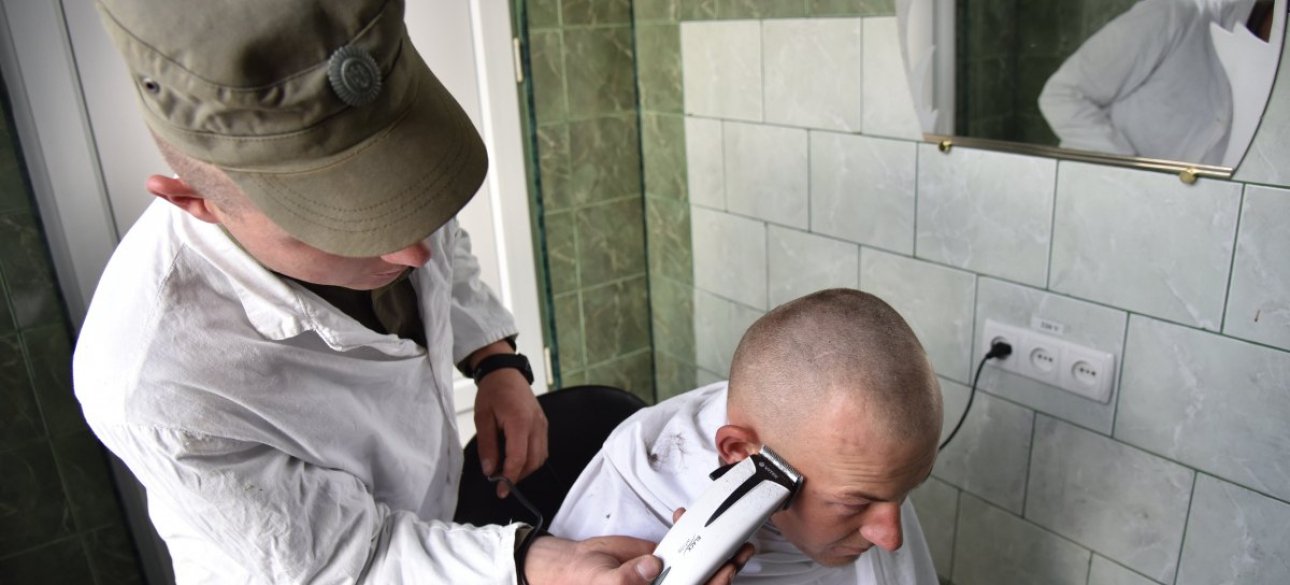
 By Eliza Popova
By Eliza Popova
Let's try to understand-why the enemy is such a significant increase in the number of personnel (and 150-160 thousand-this is a sufficiently significant indicator) Actions in Ukraine? We have already found out that the most likely method of increasing the number of personnel of "unintentional grouping of the Armed Forces of the Russian Federation on the Southwestern TVD" for the specified number is the continuation of the process of mobilization deployment (mobilization) of the Russian army.
After all, if the figure sounded by the Syrian figure is true (well, or very close to such), then the real need for the Russian army in "Fresh Manya" is 1. 5-2 times a larger figure than voiced-300-320 thousand "carcasses" To really increase the number of this group to 690 thousand. The Russian military command will not be able to recruit them now available by available methods (from the contracting "Zamanukha" to the hunting of migrants.
And this means that they will have to "take away the soldiers" at a moment. At the same time, there are a number of factors (both objective and subjective), which in no way contribute to the organization and conduct of any mobilization tricks on the swamps. We will talk about them in more detail. Now let's try to figure out why the goat bayan. In fact, any mobilization deployment of troops is only part of a larger process called the strategic deployment of troops.
Mobilization itself is only its first part, and the second is the prompt deployment of troops. That is, the creation and deployment of troops on certain (planned) operating areas or in general at the TVD (theater of hostilities). Of course, if you are fighting "serious", then mobilization and prompt deployment of troops (armed forces) are interrelated processes. One thing without the other simply does not work or apply.
In terms of sense and essence, the strategic deployment of troops (the Armed Forces of the State) is generally the process of transition of the Armed Forces from peacetime to martial law and their preparation directly for use in the war (armed conflict). If you are attacking, or assured that you are about to attack, then this deployment is done before the war (in advance). If you were attacked, "and you did not expect", then strategic deployment is carried out after the start of hostilities.
It is clear that in general, the Russian army had to "strategically deploy" until 24. 02. 2022 (ie, conduct hidden mobilization and prompt deployment before the beginning of its large -scale invasion).
But the current Kremlin regime was so confident in its rapid victory (Blitzkrig) that he decided to do without all these "excessive" mobilization things (which, objectively, substantially load the system of public administration, social sphere and the army itself, and too - violated on At that time, the Russian system of mobilization) and attacked Ukraine, in fact, with its army of peacetime.
However, the swinging was fast, so in the fall of 2022 they "started" in the sense of a full strategic deployment. In other words, they announced mobilization and began to implement elements of the operational deployment of the Armed Forces of the Russian Federation (regrouping of troops, creating the necessary elements of combat and operational management of troops in specific operating areas, began to cover the movement, concentration and deployment of certain formations, etc. ).
And it was from this point that the number of Russian strategic grouping, which was deployed and operated in Ukraine, began to grow. At first slowly, gradually, then - with a higher rate, and today this process is ongoing.
Therefore, some domestic experts tend to consider it a manifestation of the current Russian military-political leadership in the long-term Russian-Ukrainian war of the so-called strategy of "permanent mobilization" (they call it "the theoria of the Commodov Svetchin", by the name of the Russian-Soviet military theorist. Actually, it was its fervent supporter and developer of the practical foundations of this system).
Its essence is that in the state in advance, even before the war, a system of "continuous mobilization" is created, which consists of a number of elements (from "mobilization points" of different levels, "Centers "Mobilization of certain sections and population groups with a clear designation of the terms, volumes and directions of conscription of citizens, as well as their continuous military training and training).
Simply put, the theory of "permanent mobilization" is determined and argued by the fact that before a long war with a strong opponent in the state should be created a working and effective mechanism of continuous mobilization that would not only compensate for current losses during such a war, but also the active part of the army "(that is, of the strategic group that, in fact, is conducting combat) already prepared mobilization reserve.
At the same time, according to the "Commodiment Svetchyna", in such a war, there is a greater chance of winning the party that most fully and qualitatively realizes the possibilities of this mechanism. That is, it overcomes its enemy in a kind of mobilization pursuit (he called it "mobilization"). So, many of our experts believe that the current gradual increase in the number of Russian strategic grouping in Ukraine is a manifestation (element) of such a Kremlin strategy (theory).
That is, the logic here is simple and understood: at first glance, it seems clear and logical. But, as always, there are nuances that make such a strategy, if it is, of course, it is really implemented by the Kremlin, not its regular simularities, let's just say it is problematic.
The theory of "permanent mobilization" implies the presence of either already prepared mobreser, or the mechanism of preparation of reservists, which is able to work in "continuous mode" with constantly larger volumes of "reservists processing". With this in the swamps - problems. People, to "choose the oath", maybe in them. But they mostly need what we have called BVP (basic military training).
In addition, the suitable places and "instructor-methodical" composition, which would be able to do it continuously and at a pace, which are defined as "very well and many"-also not enough. In other words, the "imcobility" of the mobilization system existing in the swamps has its limits, which, obviously, directly affect the pace and volume of the same "permanent mobilization" and, accordingly, on the pace of increasing the "number of the current army".
General Zaluzhny did not accidentally wrote in his famous article about the need to "find new (ie technological) methods and methods of increasing the amount of enemy losses. " From the Russian command and in general, its military-political leadership would be the point of carelessness that such a "search" does not continue in Ukraine in Ukraine or do not think about this in the relevant structures of our partner countries.
It is possible that, by realizing the same theory of "mobilization tension", in one "unknown", of course, for themselves the moment Russians will be faced with cruel reality - their system of permanent mobilization will simply not be able to compensate in the required amounts of their own loss your main task), not to mention any increase.
And this may well happen for two reasons - the one I said above, as well as because of the unrestrained desire of the Russian command constantly "climbing forward" (step everywhere and always). And every attempt to advance "in battalion columns", as it was recently in the defense lane of our 79th ODSBR, this moment is just approaching.
Returning to the thought of the fact that mobilization deployment is only an element of strategic deployment and should be combined with prompt deployment, it should be noted that to throw "additional" 150-160 thousand in this context, of course, perhaps, but in this case, it is quite possible The logical question is where to carry them then, where to concentrate and unfold them, in which the groups, and most importantly - why? To put in landings like under Avdiivka or Time? Obviously, I would like to "differently".
For example, something such "operational-fucking", so to speak, "deep" and "all-encompassing" (in other words, the same "straightening"). Well, then, again, is quite a natural question: is there any real prerequisites for such "useful" and "smart" use of these additional 150-160 thousand at the front? And is it capable of creating them to create them? And there are many more nuances, I will not list.
Unlike our certain experts, who are convinced that the Russian military-political leadership was "swayed" by the "theory of" Commodiment Svetchin ", I believe that the current increase in the number of Russian strategic grouping (of course, if it really happens) is due to a little other reason than the desire to "win in a mobilization pursuit".
As for me, it is just about the opposite - the hurry and the desire to create a momented, and most importantly - a decisive advantage in the forces and means (or on the whole front, or on some defined/planned operating directions) to move from sustainable, positional forms of organization and fighting for maneuverable and deep operations, at least before attempting to take such a transition.
Or, as an alternative, the enemy increases the number of its group, seeing the possibility of such an attempt from the Armed Forces. By the way, the terms of this planned (according to General Sirsky) increase in number (mobilization deployment) of the Armed Forces of the Armed Forces - the end of this year testify to this. This is clearly outside the active stage of the enemy summer and autumn campaign.
As for me, according to all the "schedules", in the period of September-October this year it is worth expecting another attempt by the enemy to "achieve a decisive fracture in the war. " It is possible that most of this "extension" is intended for this purpose, and the term "by the end of the year" determines only the term of the total end of this process.










All rights reserved IN-Ukraine.info - 2022